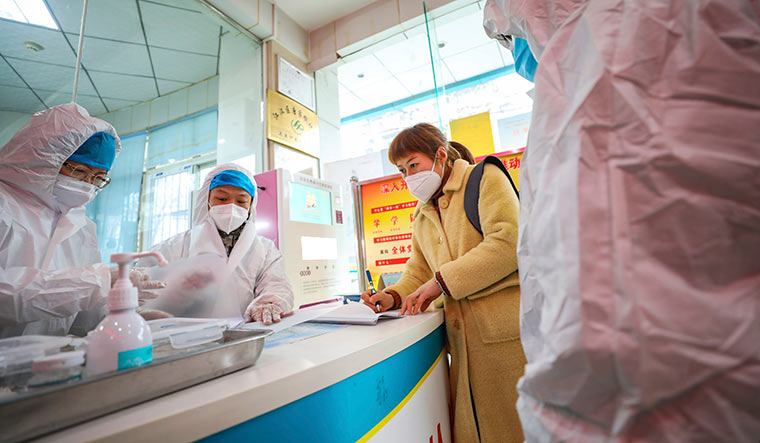China has applied Traditional Chinese Medicine (TCM) in treating more than half of the confirmed patients of novel coronavirus infection in the country's Hubei province, which is the epicentre of the epidemic, a senior health official said on Saturday. The TCM is an ancient method of treatment, over 3,000 years old.
The death toll in China's novel coronavirus (COVID-19) epidemic has climbed to 1,523 with 143 new fatalities reported mostly from the worst-affected Hubei province while the confirmed cases jumped to over 66,000.
"Since the beginning of the outbreak, the government has attached importance to both Traditional Chinese Medicine (TCM) and Western medicine by mobilising the strongest scientific research and medical forces in both fields to treat the patients," Wang Hesheng, deputy head of China's National Health Commission, said. Wang said that TCM has been applied in treating more than half of the confirmed patients of novel coronavirus infection in the country's Hubei province.
The announcement about the use of TCM for COVID-19 patients is significant as the virus has no standardised cure yet. TCM universities and hospitals across the country have sent 2,220 medical workers to Hubei to help combat the epidemic, Wang said. The Chinese government has also approved field trials for experimental US antiviral drug, Remdesivir to treat coronavirus patients. "TCM has also been used in the prevention and control of COVID-19 at the community level," Wang said.
He emphasised that China is trying to improve the cure rate of patients by coordinating the resources of traditional Chinese and Western medicine.
"By coordinating the resources of traditional Chinese and Western medicine, we strive to improve the cure rate and reduce fatalities by the greatest possible amount to effectively safeguard the safety and health of the people," Wang said.
Jiao Yahui, also a senior official at the National Health Commission, said that the combination of traditional and western medicines have shown supportive results.
"For severe and critically ill patients, antivirus treatment, together with treatment combining traditional Chinese and Western medicine and supportive treatments, such as the use of ventilator, blood plasma from recovered patients and extracorporeal membrane oxygenation (ECMO), have shown effect," Jiao said.
"Recently, we have been urging doctors to use ECMO at an early stage to help restore patients' blood oxygen saturation and reduce fatalities," Jiao added.
ECMO is a treatment that uses a pump to circulate blood through an artificial lung back into the bloodstream.



